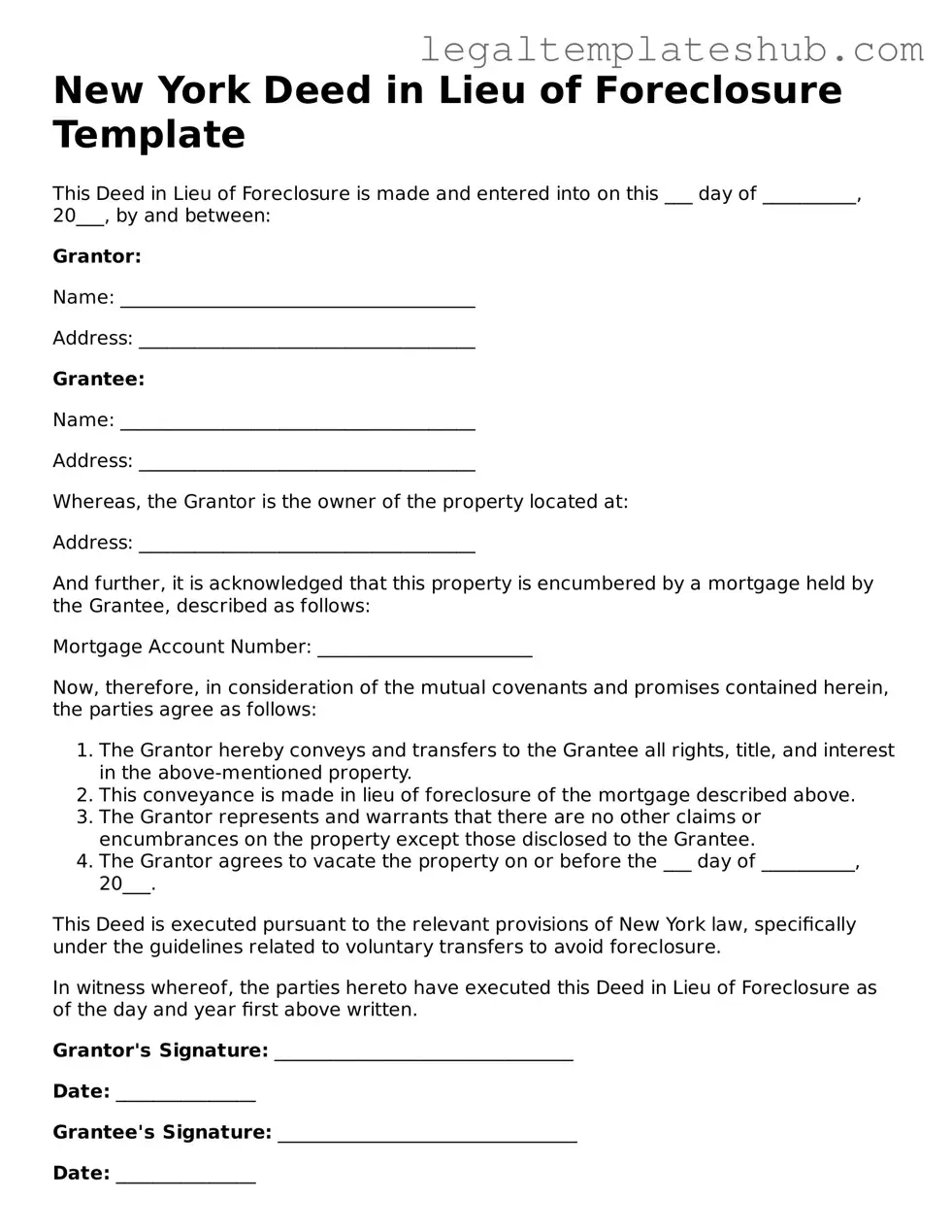Printable Deed in Lieu of Foreclosure Document for New York
A Deed in Lieu of Foreclosure is a legal document that allows a homeowner to voluntarily transfer ownership of their property to the lender in order to avoid foreclosure. This process can provide a more straightforward resolution for both parties compared to a lengthy foreclosure process. To begin, consider filling out the necessary form by clicking the button below.
Access Editor
